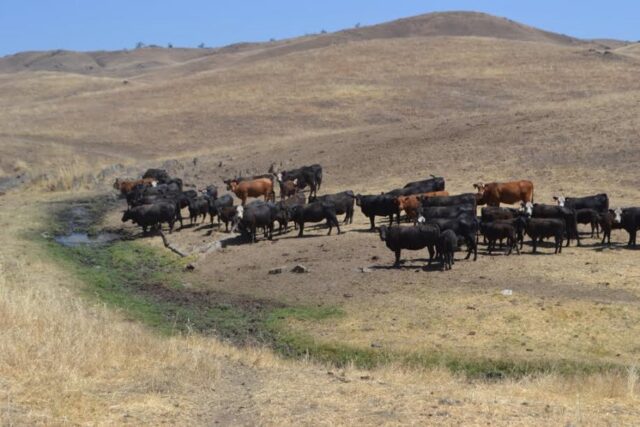This post has been read 266 times!
Interested agricultural landowners have until November 13 to apply for the available funding
October 6, 2023 – USDA’s Natural Resources Conservation Service (NRCS) is currently accepting applications for the Agricultural Conservation Easement Program through the Inflation Reduction Act (IRA). Interested landowners have until November 13, 2023 to apply for this special funding through IRA. Applications will compete nationally and must meet target conditions and be located within the identified National Priority Areas.
“We are excited to support California’s producers with an historic investment in climate beneficial conservation this Fiscal Year,” said NRCS California State Conservationist Carlos Suarez. “With the addition of the Inflation Reduction Act, we will be able to help landowners conserve and protect a great number of prime farmlands, ranchlands, and healthy wetlands for the benefit of all.”
The NRCS Agricultural Conservation Easement Program (ACEP) helps landowners, land trusts, and other entities protect, restore, and enhance wetlands or protect working farms and ranches through conservation easements. ACEP has two components:
- Agricultural Land Easements (ACEP-ALE) help private and tribal landowners, land trusts, and other entities such as state and local governments protect croplands and grasslands on working farms and ranches by limiting non-agricultural uses of the land through conservation easements.
- Wetland Reserve Easements (ACEP-WRE) help private and tribal landowners protect, restore and enhance wetlands which have been previously degraded due to agricultural uses.
IRA prioritizes eligible land that will most reduce, capture, avoid, or sequester carbon dioxide, methane, or nitrous oxide emissions. For Fiscal Year 2024 (October 1, 2023 through September 30, 2024, the following program-eligible areas are prioritized:
ACEP-WRE
- Highly organic soils that will optimize the soil carbon sequestration potential and prevent increased greenhouse gas emissions through the maintenance of existing non-cultivated areas, restoration of previously cultivated areas to perennial vegetative cover, and restoration of the natural hydrology to keep the soils saturated and anaerobic.
- Prior converted or degraded wetlands that will be restored to native riparian forests.
- Approved localized priorities: a) Montane wet meadows and b) Ephemeral wetlands.
ACEP-ALE
- Program-eligible agricultural lands currently classified as grassland or native vegetation (e.g. sagebrush) where NRCS has identified a high threat of conversion to a non-grassland use.
- Program-eligible cropland or grassland where NRCS has identified a high threat of conversion to a non-agricultural use.
- Active agricultural rice cultivation on subsiding highly organic soils.
ACEP-WRE includes permanent easements that pay 100 percent of the easement value and restoration costs, and 30-year easements that pay up to 75 percent of the easement value and restoration costs. ACEP-ALE includes permanent easements based on a fair market appraisal of the easement value as determine by an independent appraiser. Application will compete nationally for available funding through the IRA.
While NRCS accepts ACEP applications throughout the year, the agency plans to make Fiscal Year funding decisions from the pool of applications funded through IRA by December 22, 2023. As with all NRCS easements, the landowner retains the title to the land, and the right to control access and recreational use. The land remains on the tax rolls.
For more information on ACEP, landowners can contact their local NRCS Service Center or visit here.
Since its inception in 1935, NRCS has worked in partnership with private landowners and a variety of local, state and federal conservation partners to deliver conservation based on specific, local needs.
Source: NRCS

